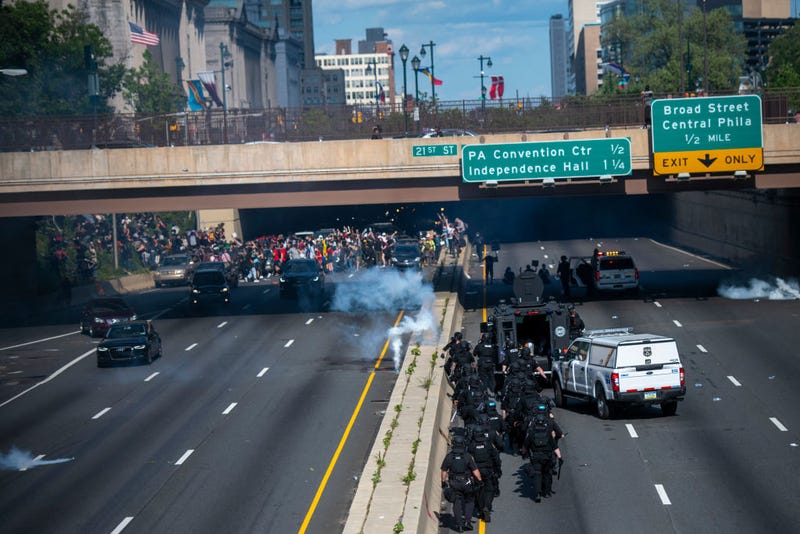
PHILADELPHIA (KYW Newsradio) — The independent report on the Philadelphia police response to civil unrest last summer contains nearly 80 recommendations for improving department practices. Many of the changes are already underway.
Co-author Nicole Phillips of the law firm Montgomery McCracken said the report’s purpose was not to assign blame but to advise the Philadelphia Police Department on how to better handle future operations, and she’s pleased the department is already responding.
“There are a number of initiatives that Commissioner Outlaw and her executive team have initiated, recognizing themselves what those gaps were that needed to be filled,” Phillips said.
Phillips cites improved community engagement and the purchase of new equipment, such as body-worn cameras. But she said a number of other changes should be made.
“Such as the police advisory councils, making sure they’re up and running in all districts and very active to involve the community in decision-making or policy-making and feedback,” she said.
The report shined a light on new and unreported events: On the first day of protests — May 30 — a white male was spotted with an AR-15 on the steps of the Art Museum moments after Black Lives Matter held a peaceful rally for George Floyd.
The incident prompted SWAT to respond. The report didn’t have anything further on the incident, such as whether or not the man was arrested.
They also illustrate how SWAT isn’t trained or assigned to crowd management but are the only ones trained in using tear gas.
The report details a lack of organization which led to chaos and poor communication. For example, police used a single radio band that became clogged with incident calls which were also not encrypted, allowing for agitators to plan, redirect and warn others of what officers knew and were responding to.
And officers didn't have enough helmets or shields to protect them from protesters throwing bottles of gas and chemicals at their heads.
The report also showed the incident commander in charge of using tear gas got approval from the commissioner to deploy it at 52nd and Market streets in West Philadelphia, but did not get her approval for I-676 or Kensington and Allegheny avenues.
The commander told the investigators he wasn’t aware he needed separate approval. The report also indicates there was no warning for the crowd to disperse before tear gas was used.
Outlaw thanked Phillips and members of the police department who provided candid input.
“It’s often difficult to take a look in the mirror and see areas that need improvement,” she said.
Mayor Jim Kenney said the report “provides a comprehensive blueprint for long-lasting police and emergency response reform.”



